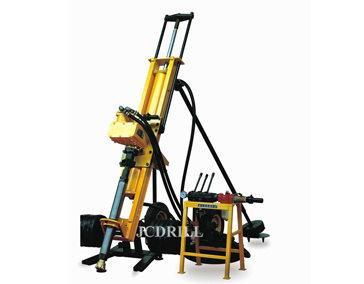Jun. 07, 22
Drilling rigs are broadly divided into land and offshore rigs. Each category is further subdivided into several types.
A rig selection process is conducted to determine which type of rig is best for your activity. This process considers three factors.
Capacity
Availability
Cost
While availability and cost are important in the selection process, capacity remains the most critical criterion for selecting a rig. Therefore, rig sizing as part of the rig selection process is designed to ensure that the selected rig can handle all expected loads during drilling construction and intervention operations.
Although oversizing a rig can lead to unnecessary costs, undersizing a rig has proven to be extremely costly to fix. Therefore, the rig sizing process must be conducted at an early stage of the project planning phase.
Drilling rigs are used to drill, lower and cement casing in wells and provide the means to perform a variety of ancillary functions such as logging and well testing.

Rock Blasting Drilling Rig
Today's drilling rigs are complex and require experienced and well-trained personnel to operate them efficiently. If not selected properly, rigs can result in low rig speeds, poor solids control leading to formation damage, and high final well costs.
In the past few years, rig selection has typically been based on shot grade. A 20,000-foot rig was selected for a 19,000-foot prospect. This means that the rig can safely drill to 20,000 feet. It also means that the rig can perform all the associated activities needed to drill and complete a well at 20,000 feet. Some 20,000-foot rigs cannot meet the rigorous requirements of 20,000-foot drilling. For any of the following reasons.
Large diameter, full-length production casing columns cannot be used because the derrick or substructure does not support the casing load
Mud pumps, pump horsepower, rotary systems, or winches cannot operate in deep water environments
Ineffective solids control systems for high-density muds
Poor blowout preventer systems
Many companies are putting more effort into rig selection because it is important to the safety, efficiency, and cost of the well.
The proper procedure for selecting a drilling rig is to determine or design the various loads that will be placed on the equipment and select the most cost-effective rig that meets these requirements. To do this, drilling contractors provide detailed rig specifications. When these specifications are compared with good forecasts, the appropriate rig can be selected. Figure 1-2 illustrates that rig sizing is an integral part of the good planning process; however, it must be done after the actual well design is completed.
Drilling Rig
The rig can be subdivided into several component systems used for design and sizing. Although the following groupings of systems are arbitrary, they can be used as the basis for the selection process.
Force
Lifting
Derrick and substructure
Rotation
Circulation
Pressure control
These groups, while broad in nature, cover the most important aspects of rig design requirements.
Rig selection made after rig sizing is not completely quantitative. While the goal is to select the most cost-effective rig, a number of factors must be considered.
Technical design requirements
Rig manpower qualifications, i.e. experience and training track record
Logistics handling
Rig site requirements
Rig selection can be further complicated by poor availability or long-term contract commitments for multiple rigs that require the use of rigs that are not suitable for a particular well.